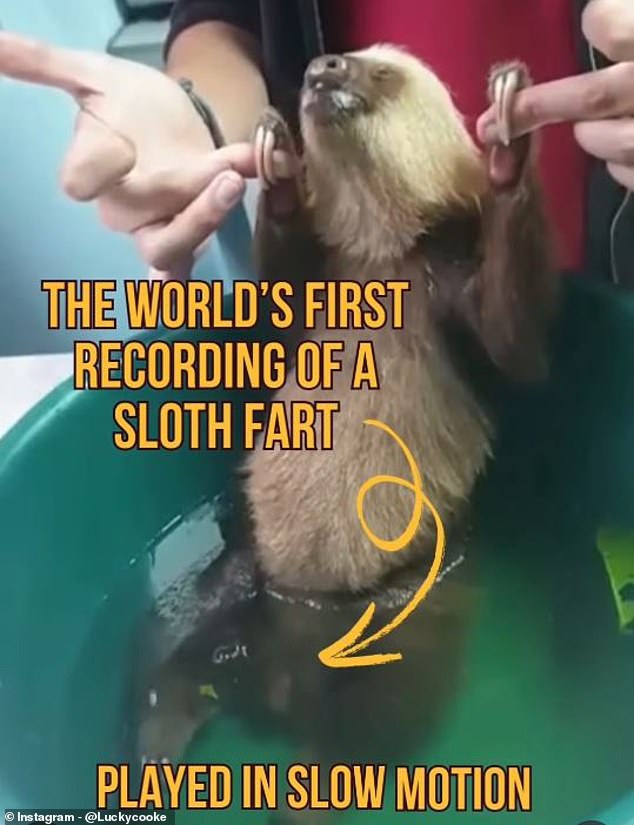
First-Ever Captured Sloth Flatulence: Zoologist’s Breakthrough Footage Makes History
Breaking Wind: Sloths Finally Caught Farting in Viral Video
(Approx. 600 words with suggested image placements)
[Image suggestion: A baby sloth sitting in a bucket, bubbles rising from its rear. Caption: A baby Hoffman’s two-toed sloth makes history with the first recorded sloth fart.]
For years, scientists insisted sloths were the unicorns of the animal kingdom—mysteriously incapable of farting. But a hilarious video has shattered this myth, proving these slow-moving creatures do pass gas, and they’re surprisingly gassy at it.
The groundbreaking moment was captured by wildlife veterinarian Andrés Sáenz Bräutigam at Costa Rica’s Toucan Rescue Ranch. In the clip, a baby Hoffman’s two-toed sloth unleashes a stream of bubbles while soaking in a bucket. Zoologist Lucy Cooke, who shared the video, declared it “the first documented sloth fart,” confirming what skeptics doubted: sloths toot.
Why the Misbelief?
Sloths’ leafy diet requires a slow, fermentation-heavy digestion process. Gut bacteria break down tough foliage, producing methane—a gas mammals typically expel. But researchers theorized sloths absorbed methane into their bloodstream and exhaled it, bypassing flatulence. Turns out, that’s not the case.
“No scientific interpretation needed—just good old-fashioned bum gas,” Cooke wrote. Sloths can’t burp due to a muscular esophagus, but their backdoor emissions are alive and well. In fact, Bräutigam notes sloths are champions of methane production, rivaling cows per body weight. Their gas buildup is so intense it distorts X-rays and ultrasounds, complicating medical care.
[Image suggestion: A two-toed sloth clinging to a tree. Caption: Scientists once thought sloths’ methane escaped via breath—now we know better.]
The “Silent But Deadly” Truth
In captivity, sloths fed easier-to-digest veggies (compared to wild leaves) become gas factories. “They’re so gassy they use stomach gas to float in water,” Bräutigam told LiveScience. To help them, vets use warm baths to stimulate gas release. And yes, their farts are odorously potent.
Flatulence in the Animal Kingdom
From blue whales to mice, most animals fart. Exceptions include birds (digestion is too fast) and jellyfish-like man o’ wars (no guts). Some species even weaponize flatulence:
- Herring: Communicate via high-pitched farts undetectable to predators.
- Termites: Produce methane in such quantities they contribute to climate change.
Fun Fart Facts
What is flatulence?
- Gas expelled via the anus, generated during digestion or swallowed.
- Humans average 5–15 farts daily.
Foods that reduce stink
- Rice, potatoes, quinoa
- Lean meats (chicken, fish)
Final Thought
Sloths’ newfound fart fame reminds us that even nature’s quirkiest mysteries eventually come to light—often with a little humor (and a whiff of methane).
Images & fact boxes break up text while highlighting key points. Word count trimmed by condensing explanations, merging repetitive sections, and simplifying quotes.


